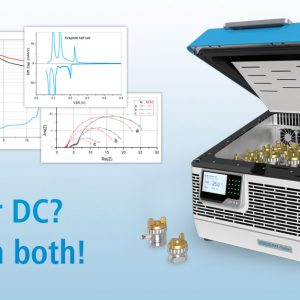
Very often, Li-ion test cells are characterized in two separate experiments: first, constant current charge/discharge cycles are applied in order to learn about the direct current (dc) behavior of the battery, and, second, impedance tests are performed in order to learn about the alternating current (ac) behavior at different states of charge.
With our new PAT-Tester-i-16, the two methods can be seamlessly combined in one single experiment. For this purpose, the constant current during charging and discharging is superimposed by a sinusoidal current of varying frequency. The short frequency sweep (10 kHz to 0.1 Hz, approx. 1 minute per sweep) is only applied every half hour. By using a Li-metal reference electrode, the test method not only detects the impedance of the full battery, but simultaneously the impedances of the individual electrodes.
—
PAT-Tester-i-16 sample test case :
First cycle of a Li-ion battery – Combining constant current cycling with GEIS
Test setup:
- Battery tester: PAT-Tester-i-16
- Test cell: PAT-Cell with PAT-Core:
WE: NCM 111 (CCI, approx. 2 mAh / cm2)
CE: Graphite (CCI, approx. 2 mAh / cm2)
RE: Li metal - Separator: FS-5P (PP fibre + PE membrane), Thickness 220 µm
- Electrolyte: 1M LiPF6 in EC:DMC (1:1) with 2% VC (100 µl)
Test procedure:
CC charge / discharge with concurrent GEIS analysis
Test results:
The diagrams show the initial charge-discharge cycle of a PAT-Cell tested in the PAT-Tester-i-16. During the galvanostatic cycles, the impedance was measured every half hour between 10 kHz and 100 mHz.
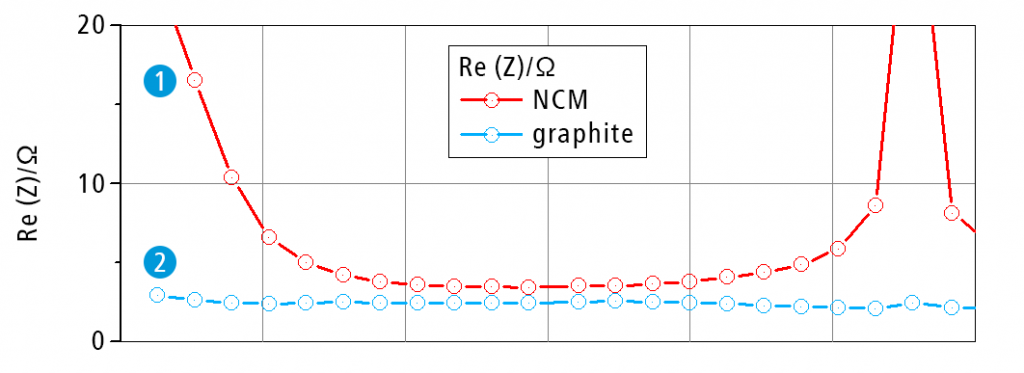
The first diagram shows the real part of the two half cell impedances (no. 1 and no.2 ) at 100 mHz extracted from the complete set of impedance data gathered during the experiment.
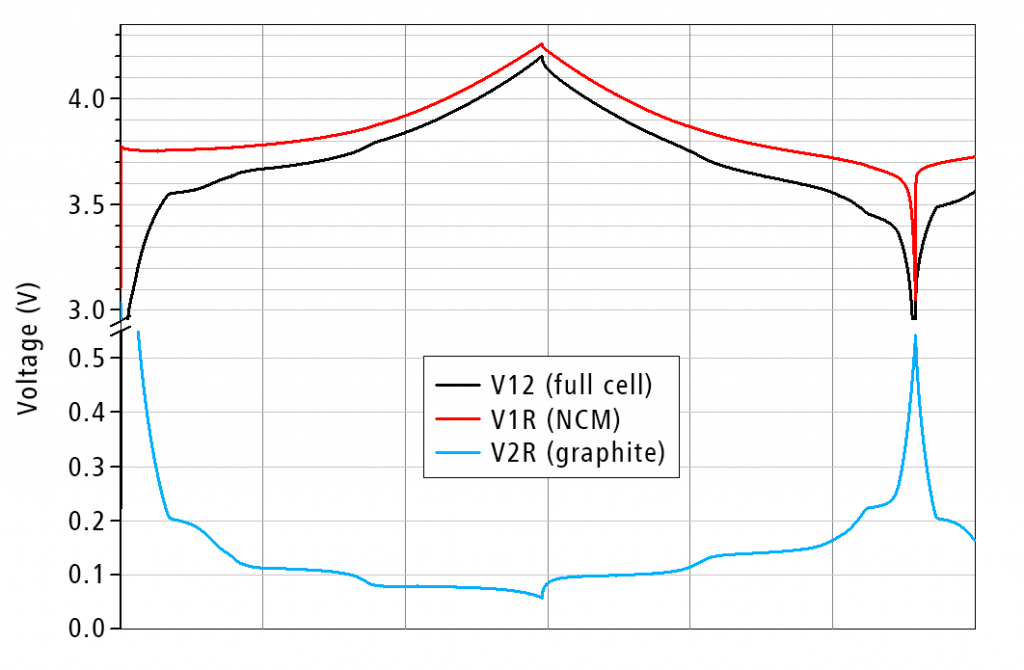
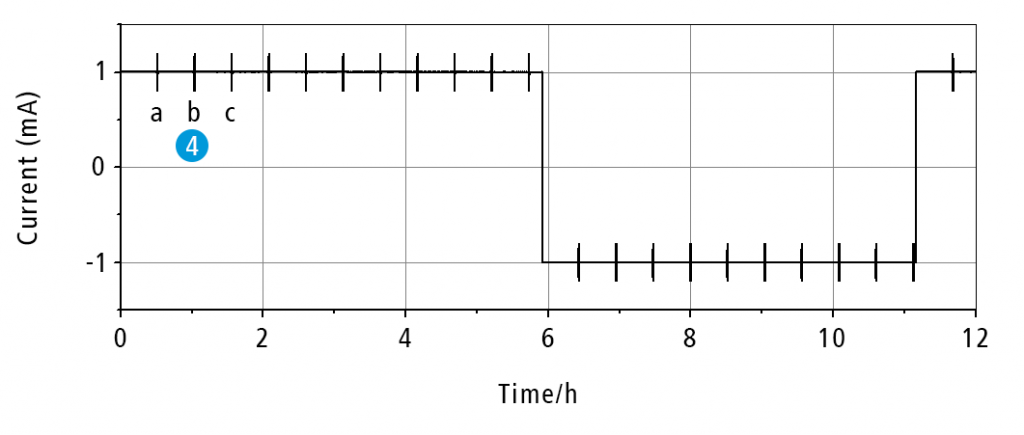

Another subset of EIS data is shown as Nyquist spectra (no.3) recorded at times a, b and c (no.4).
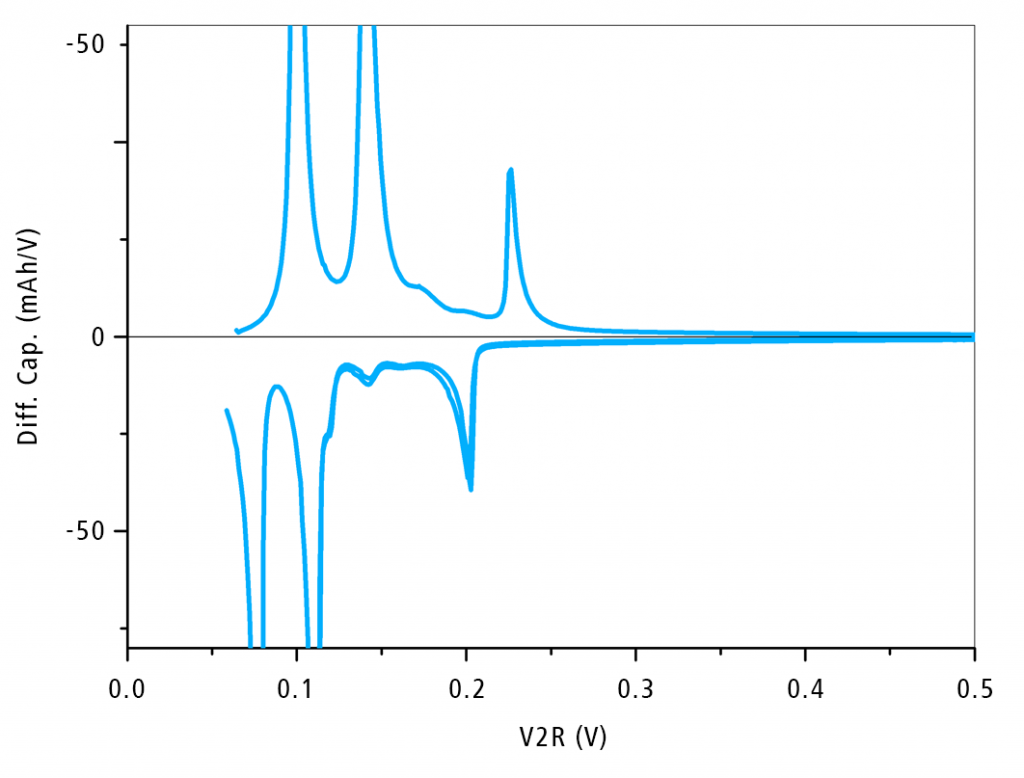
The last diagram shows the differential capacity of the graphite half cell, as already calculated during the test.
Conclusion:
Battery testing with the PAT-Tester-i-16 offers the unique possibility of measuring the DC and AC characteristics of both half cells at the same time.



Comments are closed.